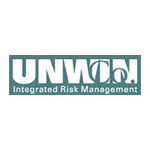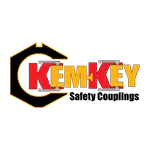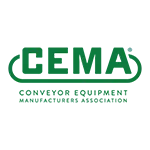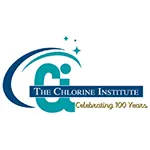Let us help you make sense of PSM / RMP!
My friend Brian Chapin will be offering an open-enrollment PSM/RMP class in Burleson, Texas, July 8th to 11th, 2025. Brian is an absolute pro in NH3 Refrigeration Process Safety. Anyone who attends will also get a FREE membership to SAFTENG. You can get more information on the class with this link.
CLICK HERE to Renew your Membership
CLICK HERE for a NEW Membership
CLICK HERE to see eligibility requirements for FREE Membership
If you have any questions, please contact m
SAFTENG has:
- Over 18,000 categorized unsafe acts/conditions and accident/injury photos
- Over 1,500 ppt's & doc's in the SAFTENG Library
- Over 4,000 Technical Articles on Process Safety, Emergency Response & OSH topics
- Over 450 videos (those not allowed on YouTube Channel)
Many THANKS to my NEW Members and those who CONTINUE to support SAFTENG:














February 10, 2025
I hate the phrase, “you can’t fix stupid.” It is offensive and mean; most importantly, that phrase is just wrong. Stop saying it. Stop using this phrase right now. “You can’t fix stupid” is serving you and your organization poorly. It colors your thinking, it makes you stop investigations too early, it sounds like something a “jerk” would say, and it pisses people off. “You can’t fix stupid” causes...
Read More
February 9, 2025
The Kentucky agency that oversees boiler safety claims the plant operated a vessel that exploded without a proper inspection permit. The Kentucky Department of Housing, Buildings and Construction found that the cooker that exploded was installed without a required permit that would have triggered a state inspection. https://www.wdrb.com/wdrb-investigates/criminal-charges-could-apply-to-inspection-...
Read More
February 8, 2025
B31.3 requires that each piping system be leak-tested to ensure tightness prior to initial operation [¶345.1]. B31 imposes certain restrictions on the types of leak tests which may be used, some general requirements for conducting leak tests, some preparation requirements for leak tests, some specific requirements for each type of leak test, and some record keeping requirements. The following six types...
Read More
February 8, 2025
February 5, 2025 MEMORANDUM FOR: REGIONAL ADMINISTRATORS STATE PLAN DESIGNEES THROUGH: SCOTT C. KETCHAM, Deputy Assistant Secretary FROM: ERIN P. GILMORE, Acting Director Directorate of Enforcement Programs SUBJECT: Enforcement Stay of the COVID-19 Recordkeeping and Reporting Requirements under 29 CFR 1910.502 On June 21, 2021, OSHA adopted a Healthcare Emergency Temporary standard (Healthcare ETS)...
Read More
February 7, 2025
Failures in effective process safety leadership/process safety management can be linked to historical Major Accident Hazard (MAH) events such as Piper Alpha, Buncefield and Texas City amongst others. In 2018, HSE flagged concerns about the offshore industry regarding stagnating safety performance and challenged the industry to respond, leading to the adoption of the Principles of Process Safety Leadership...
Read More
February 6, 2025
I am always amazed at the lack of a basic understanding of atmospheric pressure and process pressures/vacuums. My Intermediate 3-Day PS course and my Advanced 5-Day PS course have a single slide, and every time, I find I have to spend an hour explaining to the class what PSIG is and how it’s different from PSIA or just “PSI” slang. When we see an atmospheric storage tank, that vessel...
Read More
February 3, 2025
THEN THE ORGANIZATION IS DOING SAFETY ALL WRONG in the Year 2025! ➡️ OSHA compliance is the “baby steps” of safety. It’s our foundation. If the business is over 10 or older, OSHA compliance efforts should be HISTORY in 2025. ➡️ Complying with OSHA/Government MINIMUM safety standards is NOT making “Safety a Priority” or “Safety First,” etc. It is doing the MINIMUM...
Read More
February 3, 2025
A mentor of mine had this sign in his office, and every time I complained about a lack of commitment to safety, he would either hand me a Job Application to McDonald’s or point to this sign. If we think about it, it fits so many management teams today. I look back on my former management teams in my early days and came to realize, about 4 years into my consulting run, just how good I had it....
Read More
February 3, 2025
This video is an excellent visual of the expansion ratio of Liquified Natural Gas. During a transfer, a ship broke free and stretched the hose until it broke. It was all captured on cellphone video.
…
HomeRead More »
Read More
February 2, 2025
A 24-year-old man was crushed when caught between a retort machine and a stack of empty racks carried by a shuttle entering the machine. The victim entered the retort machine to clear dropped food cups from the inside of the machine without locking out the retort, which is typical activity at this location for this process. While inside the machine, the shuttle moved forward with empty racks. An emergency...
Read More
February 2, 2025
State Coordinators distribute ERGs ONLY to their State’s public response organizations. If you are not a public responder, click here for a list of commercial suppliers of the ERG2024.
CLICK HERE
Read More


















